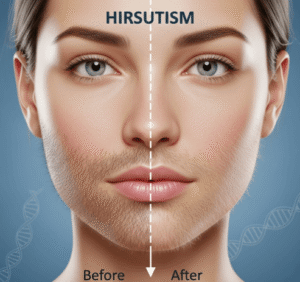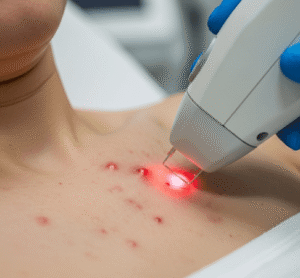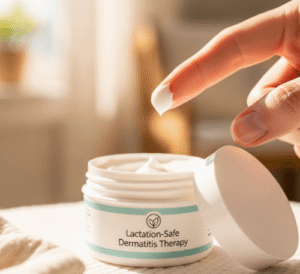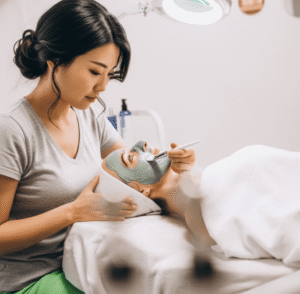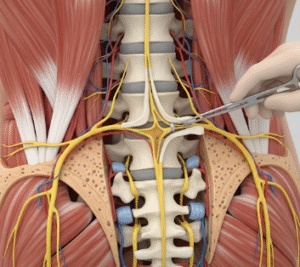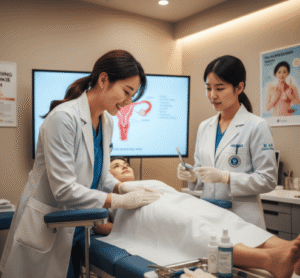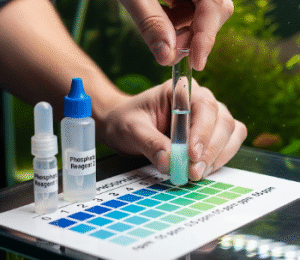Overview
Myringoplasty in children is a surgical procedure to repair a perforation in the eardrum (tympanic membrane). It is performed to restore hearing, prevent recurrent ear infections, and protect the middle ear from further damage.
In Korea, pediatric myringoplasty is carried out by specialized pediatric ENT surgeons, using microscopic and minimally invasive techniques to ensure precise repair, minimal scarring, and excellent hearing restoration outcomes for children.
Highlights:
- ✅ Repairs eardrum perforations safely in children
- ✅ Improves hearing and prevents recurrent infections
- ✅ Minimally invasive with high success rates
- ✅ Preserves normal ear anatomy and function
What is Myringoplasty (Child)?
Myringoplasty for children involves surgically closing a hole in the eardrum using a graft, often harvested from the temporalis fascia or tragal perichondrium.
Indications include:
- Chronic eardrum perforations due to repeated ear infections
- Hearing loss caused by a perforated eardrum
- Trauma or injury to the eardrum
- Complications following previous ear surgeries
Important: Pediatric myringoplasty focuses on restoring normal eardrum function while minimizing trauma, supporting both hearing development and middle ear health.
What are the benefits?
- Hearing restoration: Corrects conductive hearing loss caused by perforation
- Infection prevention: Seals the perforation to reduce recurrent otitis media
- Minimal scarring: Small incisions and microscopic techniques improve outcomes
- Supports normal growth: Ensures proper development of hearing and speech
Key benefits highlighted:
- ⚡ High success rate in pediatric patients
- ⚡ Short recovery period with minimally invasive techniques
- ⚡ Reduces need for repeated ear infections or surgeries
- ⚡ Improves quality of life and speech development
Procedure Details
1) How should a child prepare for Myringoplasty?
- Preoperative evaluation: Ear examination, audiometry, tympanometry, and sometimes imaging
- Medication review: Stop medications as instructed, especially blood thinners
- Fasting: Required if general anesthesia is planned
- Consent and counseling: Parents/guardians informed about procedure, risks, and expected outcomes
- Emotional preparation: Child-friendly explanation and comfort measures
2) What happens during Myringoplasty in children?
- Anesthesia: General anesthesia is typically used
- Incision and graft preparation: Tissue harvested (e.g., temporalis fascia or tragal cartilage)
- Eardrum repair: Perforation edges refreshed and graft placed to close the hole
- Closure: Ear packed with absorbable material for support
Duration: Usually 45–90 minutes depending on size and location of the perforation
3) What happens after Myringoplasty?
- Recovery monitoring: Observation for bleeding, infection, and graft position
- Pain management: Mild analgesics prescribed for comfort
- Activity: Avoid water exposure, swimming, and rough play for several weeks
- Follow-up care: Audiometry and examination to ensure graft success and proper healing
Highlights for post-procedure care:
- ⚡ Mild discomfort, dizziness, or muffled hearing is common
- ⚡ Ear packing removed after 1–2 weeks
- ⚡ Keep ear dry and avoid inserting objects into the ear
- ⚡ Attend all follow-up visits to ensure proper healing
Risks / Benefits
Risks:
- Infection or graft failure
- Incomplete closure of the eardrum
- Temporary or rarely persistent hearing issues
- Minimal scarring at incision site
Benefits:
- Restores hearing and prevents recurrent infections
- Safe and effective procedure in children
- Minimally invasive with low complication rates
- Supports normal speech and auditory development
Recovery and Outlook
- Hospital stay: Often outpatient; same-day discharge possible
- Full recovery: 3–6 weeks; hearing improvement may continue over several months
- Long-term outlook: Excellent; most children regain normal hearing and have a permanently repaired eardrum
- Follow-up: Regular ENT visits for graft healing and audiometric assessment
Tips for optimal recovery:
- ✅ Keep ear dry and avoid swimming for at least 6 weeks
- ✅ Prevent nose blowing or inserting objects into the ear
- ✅ Attend all follow-up appointments for hearing checks
- ✅ Monitor for signs of infection or unusual symptoms
When To Call the Doctor
- Fever, chills, or signs of infection
- Persistent or severe ear pain
- Bleeding or discharge from the operated ear
- Hearing not improving or worsening
- Dizziness or balance problems
Best Korea Option / Process
Korea provides advanced pediatric Myringoplasty care:
- Top hospitals: Specialized pediatric ENT centers with expert surgeons
- Minimally invasive techniques: Microscopic repair ensures precise graft placement
- Advanced diagnostics: Audiometry, tympanometry, and imaging for accurate planning
- Postoperative care: Pain management, graft monitoring, and hearing follow-up
- International patient support: Online consultations, appointment scheduling, and telemedicine follow-up
Step-by-step process in Korea:
- Preoperative consultation and ear evaluation
- Surgical planning with graft selection
- Myringoplasty performed under general anesthesia
- Postoperative monitoring and ear care instructions
- Follow-up appointments to assess graft healing and hearing restoration




